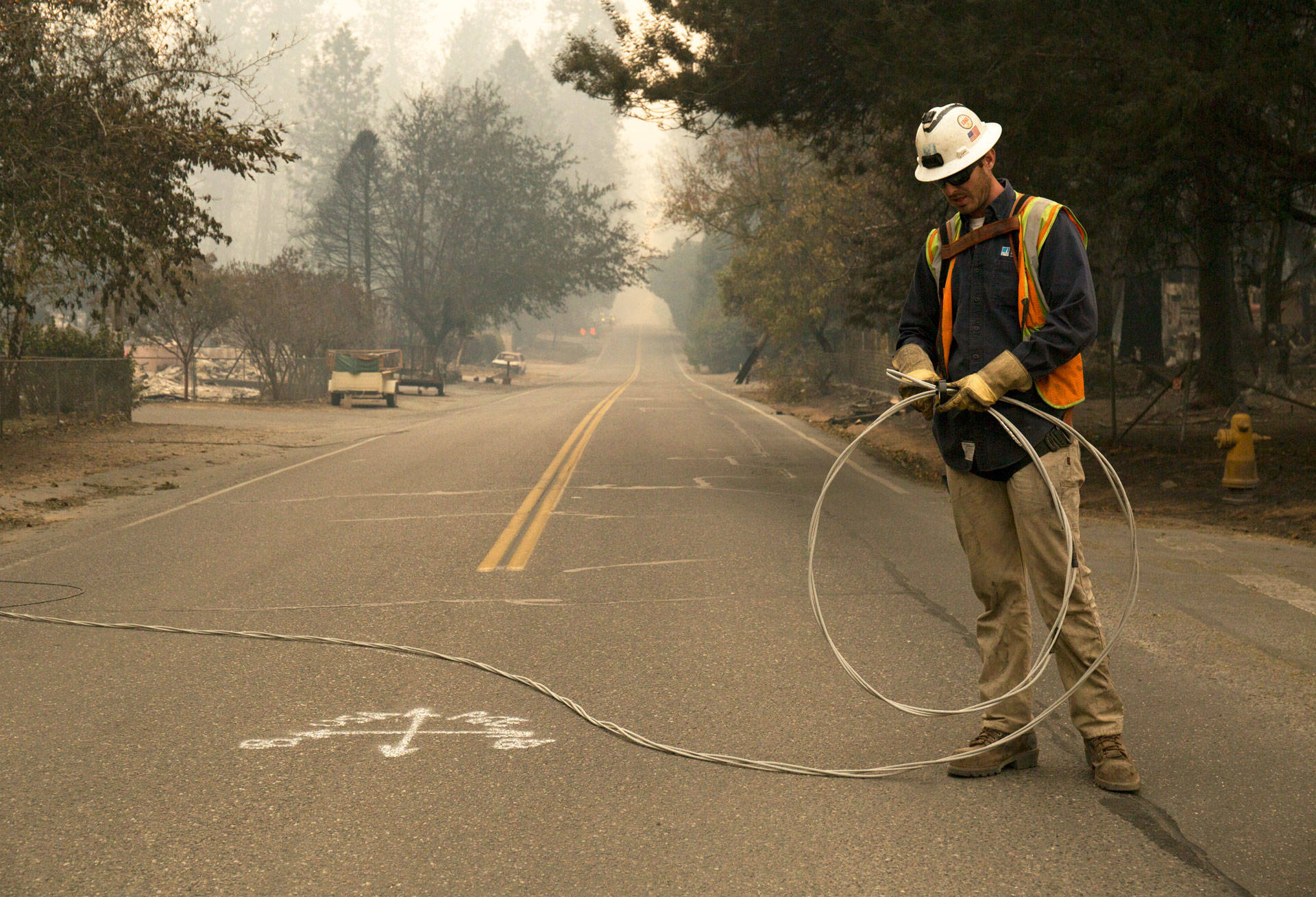P
acific Gas and Electric said it plans to file for bankruptcy protection amid potentially vast liabilities resulting from the deadly California wildfires. The announcement Monday, in the form of a filing with the federal Securities and Exchange Commission, follows the resignation of the utility's chief executive, Geisha Williams, a day earlier. John Simon, the company's general counsel since 2017, will serve as interim chief executive.
Officials are investigating whether the utility's equipment sparked the Camp Fire in November, a blaze that killed 86 people and destroyed nearly 14,000 homes.
In addition, Cal Fire investigators have ruled that PG&E equipment was involved in at least 18 of the more than 170 fires that swept Northern California in October 2017. The agency found that the company may have broken state law in 11 of those incidents and referred the cases for possible prosecution.
The utility says it is facing at least $30 billion in potential liabilities from the wildfires in 2017 and 2018. Those liability payouts could be delayed or reduced by a bankruptcy filing.
Among other uncertainties facing the company, PG&E said in Monday's SEC filing that it could be found in violation of its criminal probation imposed after a 2016 conviction for breaking federal pipeline safety laws. That case arose from the 2010 San Bruno natural gas pipeline blast, which killed eight people and devastated a neighborhood in the Peninsula suburb.
The judge overseeing the company's probation last week proposed added conditions of supervision, including requiring the company to immediately undertake new inspections of its entire electrical system. In periods of extreme fire danger, the utility would also be barred from operating any part of its power grid that it cannot certify as safe.
PG&E also cited recent decisions by ratings services to downgrade the company's credit to "below investment grade" — or junk — status as making it far more difficult to raise capital. The company added that it intends to skip a $21.6 million interest payment due Tuesday on one series of its outstanding bonds — a step that could lead to a default on that obligation next month.
Nevertheless, the company said it will be able to gain access to capital and resources it needs to continue providing service to customers as it restructures. PG&E shares plunged 50 percent in Monday morning trading on the New York Stock Exchange.
Chapter 11 of the federal Bankruptcy Code grants companies temporary protection from creditors while allowing a company's operations to continue.
Chapter 11 reorganization represents "the only viable option to address the company's responsibilities to its stakeholders," said Richard Kelly, chairman of the board of directors of PG&E, in a statement.
"The Chapter 11 process allows us to work with these many constituents in one court-supervised forum to comprehensively address our potential liabilities and to implement appropriate changes," Kelly added.
In the filing, PG&E stated the company is working with creditors and several large banks to ensure electricity and natural gas can be provided while bankruptcy proceedings progress.


